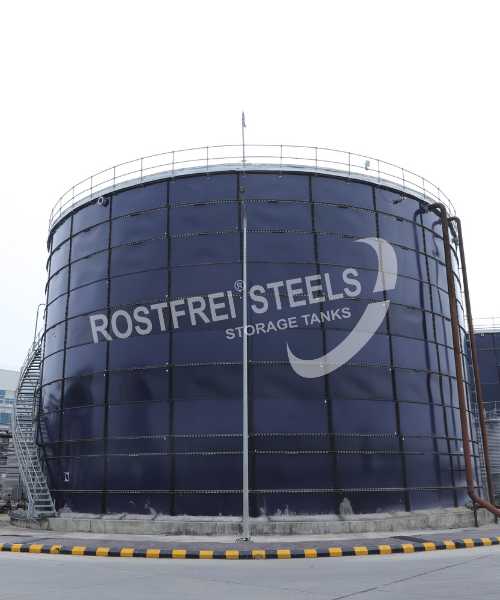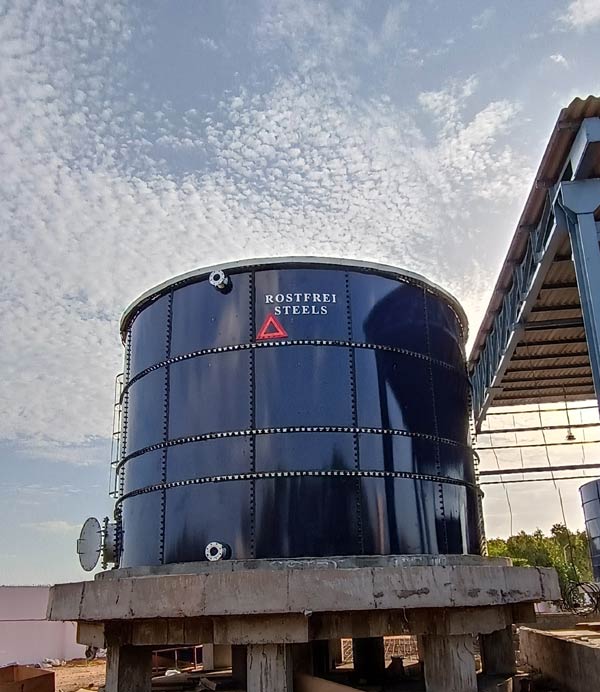Glass-Fused-to-Steel (GFS) tanks, also known as Glass Lined Steel (GLS) tanks, represent a premium technology is the available in the liquid storage tank industry worldwide. The fusion of glass and high-tensile mild steel combines the best properties of both materials. Steel provides strength and flexibility, while glass offers corrosion resistance. This fusion eliminates the need for painting in the future, as the tank is inherently protected against corrosion by the glass enamel coat.
One of the significant advantages of GFS tanks is the widening of the acceptable bracket of pH values after the fusion of steel with glass. This means that the tanks can withstand a wider range of pH levels without compromising their integrity.
Moreover, the application of Glass-Fused-to-Steel technology to both interior and exterior surfaces ensures that the tanks can withstand harsh environments for many years without encountering significant issues. This durability makes GFS tanks an excellent choice for various industrial, municipal, and agricultural applications where reliability and longevity are crucial factors.

ROSTFREI offers two variants of Glass-Fused Steel (GFS) Tanks:
1. GFS Tanks with Sealant:
2. GFS Tanks with Liner:
Liner: The liner is a protective barrier that shields the tank’s interior from chemical reactions, corrosion, and external contaminants, significantly extending the tank’s service life.
The Design Standards followed for Glass-Fused-to-Steel (GFS) tanks –
Adhering to these standards ensures that GFS tanks meet the necessary safety, quality, and performance criteria required for water storage and fire protection applications. Compliance with AWWA D103-09 and FM 4020 standards also helps ensure consistency and interoperability in the design and construction of GFS tanks across different projects and locations.
A brief process of creating Glass-Fused-to-Steel (GFS) tanks involves several precise steps to ensure the quality and integrity of the finished product:
1. Nut & Bolt holes and manhole drilling/punching
2. Shot blasting process
3. Enamelling Process
4. Quality check
Here’s an overview of the typical quality check process:
5. Installation process:
Leakproof by –
Sealing Joints using Sealant: To prevent any water leakage, all bolted joints are sealed using a PU sealant. This sealant helps create a watertight seal between the panels, ensuring the integrity of the tank structure.
Internal Liner: an internal membrane liner is installed inside the tank to further enhance its water-holding capabilities. This membrane liner acts as a main additional barrier against corrosion and helps maintain water quality.
Types of Roofs We offer:-
1. Zincalume/FBEC Dome Roof
2. Zincalume/FBEC/ GFS Conical Roof
3. ZA Flat Liner Roof
4. Double membrane liner roof
5. GFS fixed leakproof roof
COLOR OPTIONS AVAILABLE:-
Rostfrei GFS tanks are available in three colour options.

Sunfast UV-exposure enamel coat which does not fade easily.
Glass Fused Steel Tanks offer extensive applications across various application & industries. Some are mentioned below:
Include material codes along with design standards for:

Rostfrei Steels is a head most manufacturer & supplier for Storage Tanks, Storage Silos & Material Handling Equipment.

Rostfrei Steels is a head most manufacturer & supplier for Storage Tanks, Storage Silos & Material Handling Equipment.